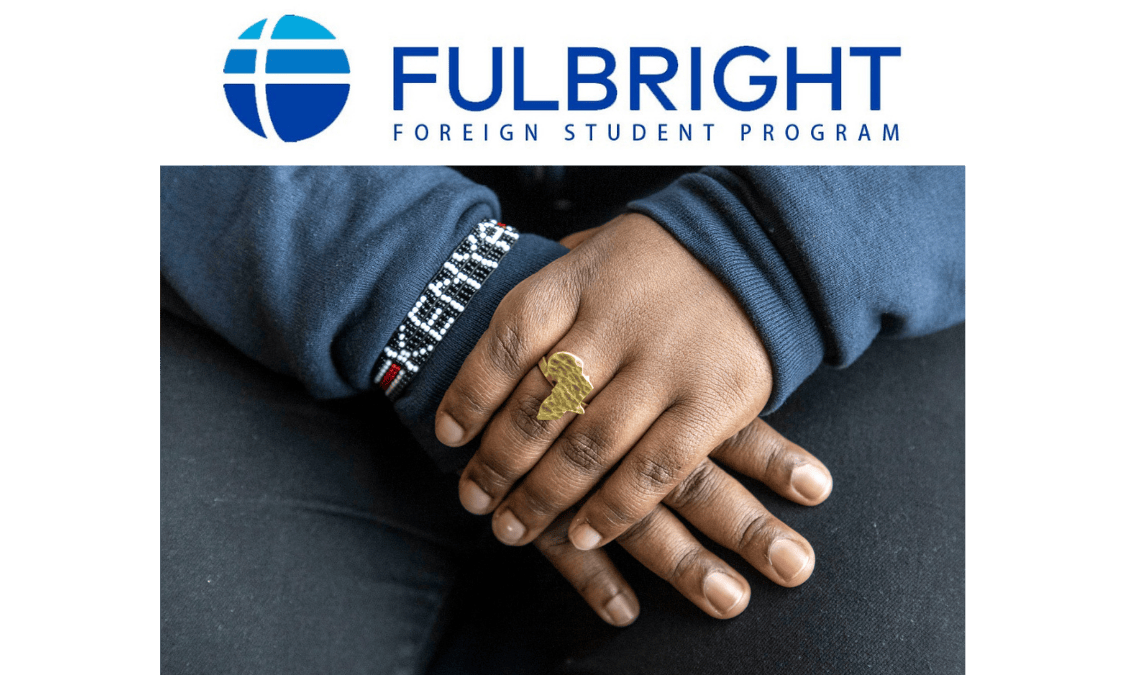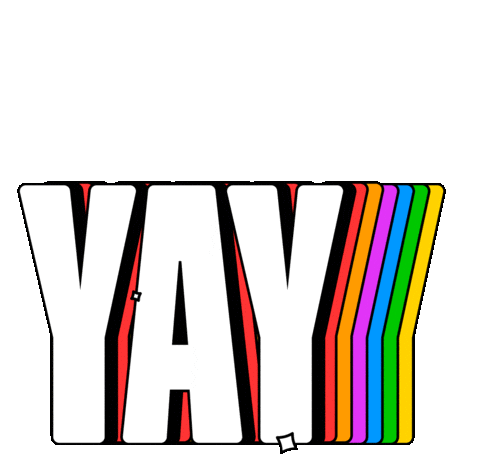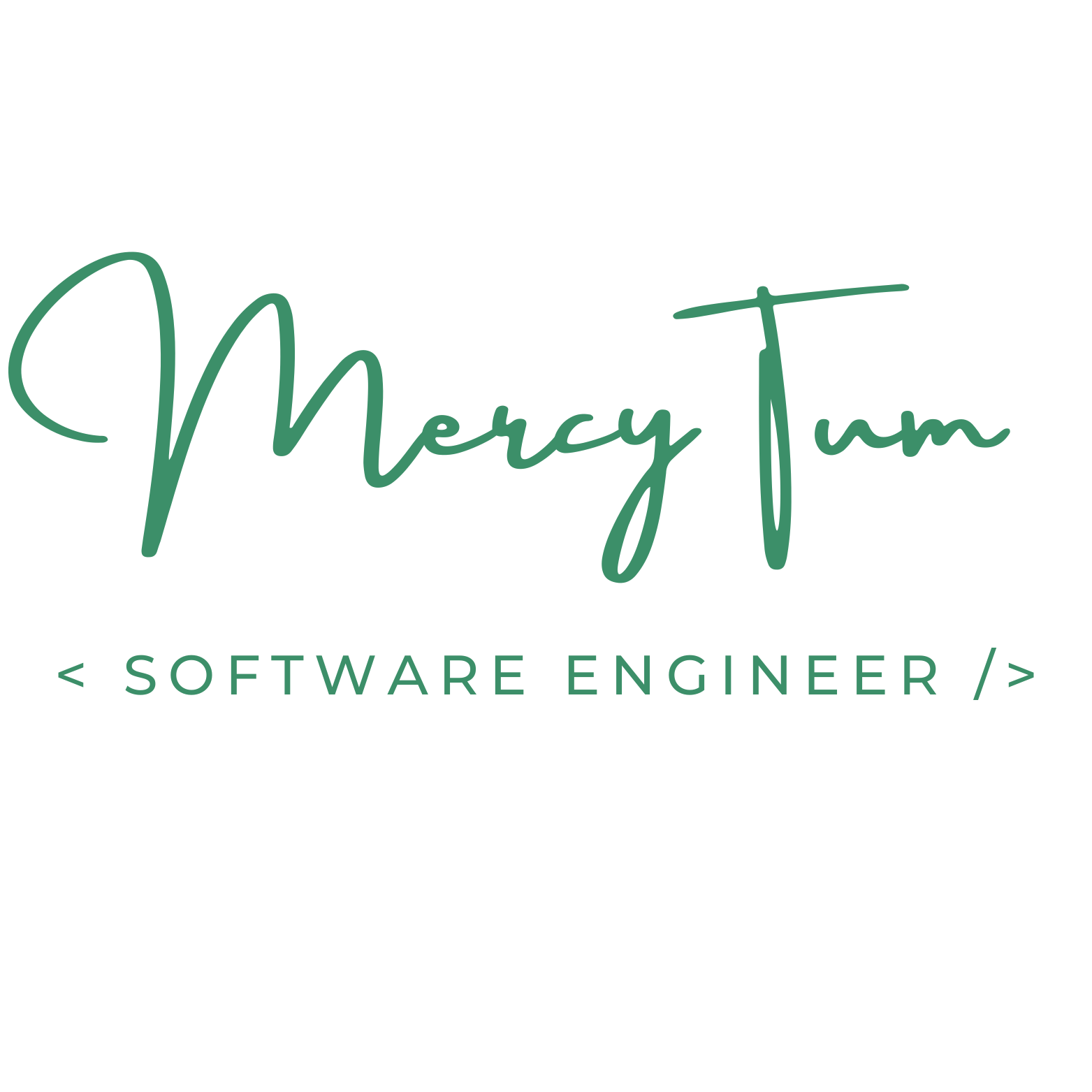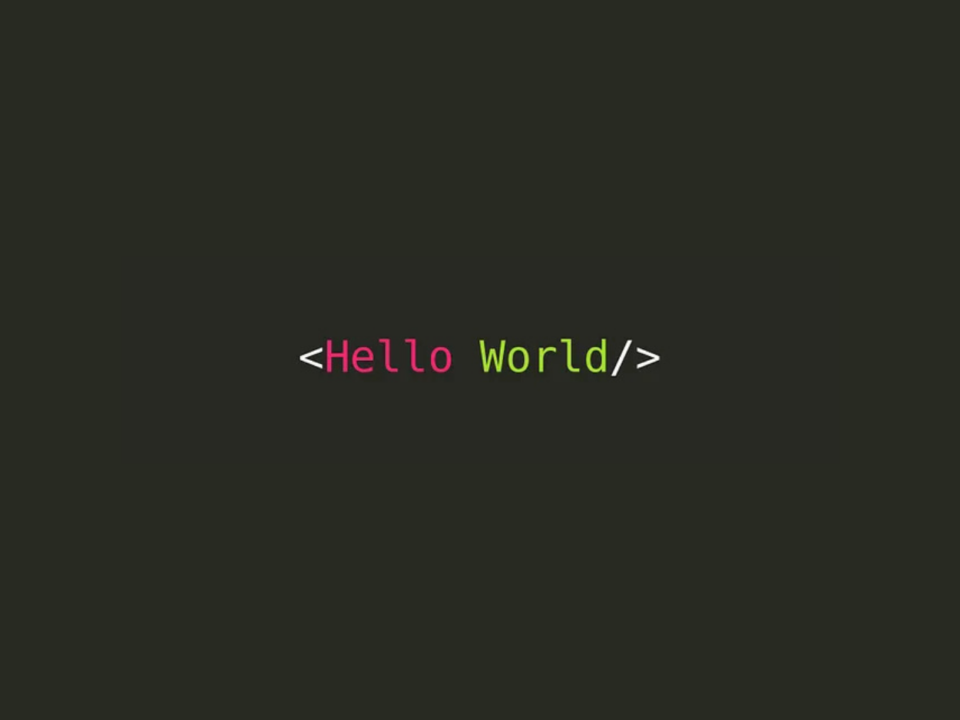
Table of contents
- What is Fulbright?
- How I Feel About This Journey
- Discovering Fulbright
- What Inspired Me to Apply
- My Fulbright Application Process
- Application Requirements
- My Mindset During the Application
- Receiving Updates on My Application
- Required Exams & Preparation
- Exam Dates and Results:
- The Interview
- The Waiting Game: Updates & Milestones
- Scholarships Awarded
- Preparing for My Move
- Leaving Microsoft for Fulbright
- Tips For Crafting a Winning Application
This is my personal experience
I want to declare that this is my personal experience and does not represent Fulbright, the United States government, or the U.S. Embassy in Kenya.
What is Fulbright?
The Fulbright Program is a U.S. government-led international exchange initiative that partners with 160 countries to promote mutual understanding, cultural exchange, and global knowledge sharing.
It provides full or partial funding covering tuition, living stipend, travel, health insurance, and other allowances, but students must arrange their own accommodation before traveling to the U.S. Successful candidates must secure their own passports being issued a J1 visa, which comes with certain conditions that participants must adhere to.
The Fulbright Program offers two placement models - the IIE Placement and Self-Placement. In IIE Placement, the Institute of International Education (IIE) secures degree opportunities on behalf of candidates. On the other hand, in Self-Placement, candidates apply directly to universities, manage their own applications, and cover any required fees or deposits. The candidates are also responsible for securing their own admission, funding, and tuition awards independently, without IIE involvement.
As I am writing this, the Fulbright Foreign students Program 2026/2027 is open in Kenya. It opened on January 13, 2025 and will close on April 18th, 2025. If interested in applying to the Fulbright Foreign students Program 2026/2027, use this application link: Apply Here
To learn more about the application, visit the US Embassy site: Learn More
How I Feel About This Journey
I would have never thought that someone like me—who, just five years ago, didn’t have a job and wasn’t sure about her career or future—would get such an opportunity. Looking back now, I realize everything happened so quickly that I never had time to truly appreciate how far I’ve come.
I am deeply grateful for all the opportunities and experiences I’ve had so far - they are many, and for all the people who believed in me and gave me a chance simply because they saw potential in me. The Fulbright scholarship is one of those things I still can’t believe I got, but at the same time, it’s one of those achievements I’m incredibly proud of.
It has been about six months since I started my studies in the U.S., and this journey began more than a year ago when I applied to Fulbright—on the very last day of the application deadline. Imagine that.

Discovering Fulbright
I first learned about Fulbright from my lecturer, Dr. Christopher Otieno Adika, at the university doing my undergraduate studies. He talked to us about the program since he had gone through it himself. At the time, it was one of those things that seemed fascinating but out of reach—something I never thought could actually happen to me.
It was on that day that my desire to become a Fulbrighter was born, though I had no idea that my dream would come true about seven years later.
No matter where you’re from, your dreams are valid.
- Lupita Nyong’o
What Inspired Me to Apply
I remember the exact moment I decided to apply for Fulbright. It was just after I had returned to Nairobi from my mother’s funeral. I was feeling lost and thought that planning my future might help me regain a sense of control in my life and give me some direction.
So, I called my cousin, who had received multiple scholarships, and asked for advice. I wanted to know how he did it because I knew I wanted to go back to school and become really good at something—coding(building software applications)—but I didn’t have the financial means to make it happen.
He mentioned a few scholarships, but most of them had already closed for applications. Then he mentioned Fulbright, and something just clicked. I’m not sure if it was because I was familiar with the program or because I had once told myself I would do it. Either way, I was determined.
When we checked online, we realized we had only one day left to apply. We debated whether it was enough time or if we should wait until the following year. But my stubborn, determined, and hopeful self decided, “Let’s give it a try.”
We both applied that day, and just a few weeks later, I heard back—I had made it to the next round!
April 2023
September 26, 2023
May 7, 2024
July 10, 2024
August 2024
September 3, 2024
My Fulbright Application Process
I began by researching the Fulbright Program online, reviewing the requirements, and preparing my application. The process required me to submit several documents and information, including:
- A complete online application form:
- Personal information and contact details
- Academic and professional details, including my resume, awards, and recognitions.
- Transcripts from my previous studies.
- Work experience, including internships.
- Three reference letters
- A study plan, detailing my intended degree objective, major, specialization, and future career goals
- A personal statement, where I shared my background, skills, passions, journey in tech, aspirations, and how I intended to use the scholarship to impact my community and the world
- U.S. travel history – I had to indicate whether I had previously visited the United States, which in my case, I had not.
- Test scores – American universities may require GRE or GMAT scores based on the field of study. GMAT is needed for business and law programs, while GRE is required for other subjects. Candidates scoring below the 50th percentile on the GRE should retake it. A GMAT score above 550 is considered acceptable. For TOEFL (IBT), a score of 90 is desirable, with 100 preferred. Candidates scoring below 80 should plan to retake the test.
I submitted my application in April 2023 and also had the opportunity to select four universities for placement. My choices were:
- Harvard University
- Carnegie Mellon University
- Arizona State University
- University of California
Each step of this process required careful preparation, and submitting the study plan and personal statement allowed me to articulate my vision for the future, making this application a deeply reflective and rewarding experience.
Application Requirements
In summary, the key documents I needed were:
- Reference letters
- Transcripts
- Resume
- Personal statement
- Study objective
However, beyond documents, I think the biggest requirement was confidence in myself—enough to apply despite the odds.
For anyone considering this journey, I highly recommend checking the IIE portal for the most up-to-date and detailed requirements. But above all, trust yourself—you are capable of more than you think.
My Mindset During the Application
I didn’t check the acceptance rate for Fulbright before applying, and I’m glad I didn’t. If I had, I might have been discouraged and not applied at all.
I won’t share the statistics here either. My advice? Don’t overthink it—just go for it.
Receiving Updates on My Application
- April 2023: Submitted my application
- July 10, 2023: Received an email saying I was selected for the next stage, which included a virtual interview on September 22, 2023
- August 4, 2023: Received an email instructing me to prepare for the TOEFL exam and the upcoming interview
- August 14, 2023: Learned I also needed to take the GRE exam
Required Exams & Preparation
- TOEFL Exam: Required score: 100 (I misread it as 110 and studied hard, scoring 111)
- GRE Exam: Preferred score: 50th percentile in all sections
I had to prepare for both TOEFL and GRE while working an 8–5 job, which was incredibly challenging.
Exam Dates and Results:
- TOEFL Exam: September 3, 2023 → Scored 111/120
- GRE Exam: September 19, 2023 → Scored 299 (4.0 in Analytical Writing)
- GRE Retake: October 22, 2023 → Results shared on October 31, 2023
The Interview
- Date: September 22, 2023
- Interviewers: One man, one woman
- Experience: It was a nice experience. Better than I had expected. It felt like they genuinely wanted to know me and understand why I was a good candidate. I was nervous and forgot to mention something important, so I followed up with a thank-you email afterward, including the missing information.

The Waiting Game: Updates & Milestones
- September 26, 2023: Learned I was nominated for Fulbright
- October 23, 2023: Received resources from the embassy for the placement process
- December 15, 2023: Received an update from IIE about my university placement process
- December 15, 2023: Submitted my ranked university preferences from the created submission plan from IIE. The universities to rank were: University of Michigan - Dearborn, Arizona State University -Tempe, and San Jose State University.
- December 17, 2023: Received a Duolingo test voucher
- December 24, 2023: Completed and submitted my Duolingo test (150/160)
- February 15, 2024: Heard back from the embassy requesting a copy of my degree certificate; sent it the same day.
- March 5, 2024: Received a congratulatory message from the embassy confirming admission offers from University of Michigan - Dearborn, awaiting final placement.
- April 22, 2024: Reached out to the embassy for an update and received admission documents from UM-Dearborn, including a scholarship.
- May 7, 2024: Received official placement at the University of Michigan for MS in Software Engineering; accepted the offer the same day.
- May 7, 2024: Received a medical form to be completed ASAP.
- June 10, 2024: Completed and submitted the medical form after required tests and doctor’s visit.
- June 6, 2024: Placement was finalized.
- June 11, 2024: Received the Terms of Appointment (TOA) letter and signed/submitted it on June 12.
- June 13, 2024: Received pre-departure orientation resources from the embassy.
- June 15, 2024: Formed a WhatsApp group with other Fulbright recipients.
- June 24, 2024: Submitted final TB test report.
- June 26, 2024: Registered for Fall classes.
- July 10, 2024: Received DS-2019, began visa application, and received official Fulbright award confirmation.
- July 26, 2024: Received air ticket.
- August 2, 2024: Resigned from Microsoft.
- August 9, 2024: Informed to carry true copies of transcripts and degree to school.
- August 14, 2024: Visa appointment.
- August 15, 2024: Visa ready for collection.

Scholarships Awarded
- Fulbright Scholarship
- University of Michigan - Dearborn Scholarship
Preparing for My Move
From buying suitcases to researching how people get apartments in the U.S., learning about Michigan’s weather, and understanding how to dress for different seasons—I had a lot to do. I also researched the school, spoke to Fulbright alumni to get some more information about the program, and received helpful advice that I’m extremely grateful for.
As my departure neared, I focused on final logistics, including:
- Arranging airport transfers
- Securing temporary accommodation
- Planning my daily commute to and from school
- Setting up emergency contacts
- Ensuring all last-minute details were in place for a smooth transition
Leaving Microsoft for Fulbright
After extensive research and inquiries to find a way to continue working while attending school, I was unable to do so and had to resign. It was a difficult and unfair decision, as many people don’t face this dilemma - picking school or work. However, I eventually made the tough choice to resign.

Tips For Crafting a Winning Application
These are some tips shared with me by one of the Established Opinion Leaders Specialist / Fulbright Exchanges Kenya POC who was of great help during my application process. Here's what they recommend:
Writing a strong personal statement:
- Structure matters – Include a compelling introduction, a well-developed body, and a strong conclusion. An engaging opening can make a lasting impression.
- Use correct grammar and spelling – Avoid clichés and overused jargon.
- Be authentic – Make your statement personal and reflective of your unique experiences.
- Tailor your story to your study plan – Ensure your narrative aligns with your academic and career goals.
- Stay organized and detailed – Present a clear, well-structured argument.
- Take your time – Thoughtful writing takes multiple revisions.
- Review good sample statements online – Use them for inspiration, but never copy.
- Don’t shy away from vulnerability – If personal challenges shaped your academic interests, share them meaningfully.
- Highlight your achievements confidently – Brag, but don’t exaggerate.
- Avoid redundancy – Don’t repeat details already covered in your application, like schools attended or grades, unless they add value to your story. Space is limited.
- A personal statement is not an autobiography – Keep it focused on your academic journey and aspirations.
- Show intellectual curiosity – Mention books, podcasts, lectures, or research that influenced your passion for the subject. More than listing them, explain their impact on your perspective.
- Develop your ideas deeply – Demonstrate your engagement with your chosen field and your eagerness to explore further.
- Connect non-academic experiences to your field of study – Show how diverse experiences have contributed to your academic interests.
- Explain what sparked your interest in the subject – Describe when and how your passion developed.
- Bridge past experiences with future goals – Link your undergraduate studies, post-grad experiences, and intended master’s program.
- Seek insights from professionals – Identify trends and developments in your field and relate them to your aspirations.
- Get feedback – Have at least one or more trusted individuals review your draft. Be open to constructive criticism.
- Revise thoroughly – Draft, redraft, and refine until you’re confident in your final piece.
How to Strengthen Your Study Objective:
- Be specific – Clearly outline your intended actions and expected outcomes.
- Define your purpose – Clearly state what you aim to achieve through your study.
- Ensure feasibility – Your objective should be realistic within the given timeframe, utilizing available support and resources.
- Assess relevance – Make sure your objective is essential to fulfilling your overall study and career goals.
- Set a timeframe – Ensure your study plan is achievable within the duration of the program.
Writing a Strong Project Statement:
- Use clear, concise language – Avoid jargon and maintain consistency.
- Keep it brief – This may serve as a quick reference, so keep it simple and to the point. Save detailed explanations for your full project plan.
- Avoid sweeping statements – Don’t overcommit before the project even begins.
- Ensure it answers key questions:
- What are the long-term benefits of the project in your field?
- What unique value does it provide to stakeholders?
- Does it offer better approaches or ideas than existing ones?
Tips for Writing a Strong Resume, Personal Statement, and Study Objective:
- Use simple, clear language – Keep sentences short and focus on one idea at a time.
- Avoid jargon – Opt for straightforward, easy-to-understand words.
- Refine your phrasing – Instead of common clichés, use more impactful alternatives:
- Instead of: "My responsibilities include…" → Use: "I have achieved the following…"
- Instead of: "I am deeply interested in pursuing…" → Use: "I am eager to learn…"
- Instead of: "The opportunity will enhance my career…" → Use: "Through this opportunity, I will leverage my experience…"
- Instead of: "The exposure will help me to…" → Use: "I look forward to connecting and networking with…"
- Instead of: "I will be able to…" → Use: "I will have the capacity/ability to…" or simply "I will…"
Additional application tips:
- The application form has a standard format – do not use your own application form.
- Make sure you are completing the cached application tip provided in the current application cycle.
- Start early to allow ample time for preparation.
- Submit your application on or before the deadline to avoid last-minute issues.
I am open to reviewing your drafts for the different essays. I recommend having it on Google Docs and sharing it with me as a viewer. That way, I should be able to review and give you feedback through comments on specific sections of your document. You can also find me on social media or reach out by sending an email to hello@mercytum.com
With that, I wholeheartedly wish you the best of luck if you’re applying to the program. It’s a transformative journey that opens doors to new opportunities, perspectives, and lifelong connections. And if you haven’t considered applying yet, I strongly encourage you to take the leap—you never know how far it could take you. Dream big, work hard, and embrace the adventure ahead. Kila la heri!






1 Comment
Thanks Mercy for your inspiring journey in scaling the wall of academic journey through Fullbright scholarship.